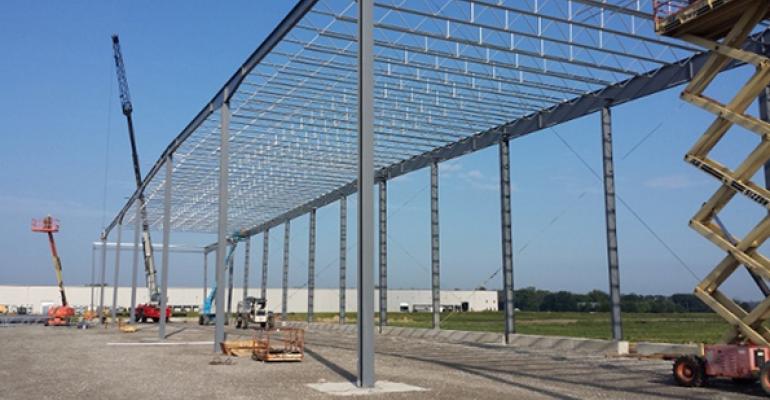As this real estate cycle stretches out, the availability of financing for speculative development appears to be more constrained than during the last market peak, although opportunities continue to present themselves to investors betting on the growing e-commerce distribution sector.
Financing of speculative construction is somewhat common in the industrial sector and typically the only way development occurs when it comes to apartment, seniors housing and self-storage properties. It’s far less available for retail and office construction, but it is emerging in single-family build-to-rent communities.
“Things are robust and positive in terms of the overall amount of capital looking for investments in the real estate space,” says Lauro Ferroni, director of research with real estate services firm JLL. “We projected a minor decline in overall transaction volume for the U.S. in 2019, and we are really seeing the market moving in line with those expectations, so we aren’t seeing any real surprises at the moment.”
Capital markets activity for speculative deals in the industrial sector has been slightly more restrained this go-around, Ferroni says. “Even with developers looking to chase that third-party logistics or last-mile delivery demand in general, we do still feel speculative (industrial) development has been more conservative this cycle, with investors taking on less speculative risk than previous cycles.”
There’s more diligent underwriting and a focus on clearer investment thesis on projects that has resulted is less speculative building and more disciplined financing, Ferroni adds.
The lending environment as a whole has been more cautious during this cycle, with a lower proportion of loans in the CMBS space and more constrained loan-to-value (LTV) ratios than what was evident in the market 10 years ago, he notes.
However, when speaking only of industrial deals, the financing market remains “quite aggressive at the moment,” he notes. “It’s for the same reasons that equity investors like industrial: the strong demand, the lower ongoing capital costs, and the relatively predictable cash flows.”
Investors doing any type of commercial project without any pre-leasing can expect their list of potential lenders to be relatively small and their cost of capital to be expensive, says George Maravilla, senior vice president at Tower Capital, a structured finance firm in Phoenix.
“You move up the risk curve when you don’t have pre-leasing,” Maravilla says. “It likely will be a private lender; no bank I know will get their head around speculative construction unless it’s in a very constrained market.”
Some banks are finding speculative development deals they like. Tower Capital is currently very active in the single-family build-to-rent asset class, having recently arranged financing on two such deals in Phoenix with garden-style rentable homes designed to attract empty nesters and millennials.
The firm is currently raising capital on two similar deals and has a pipeline of others in the early discussion stages, he says. Banks are among the potential capital sources as they view the asset class as one with manageable risk, Maravilla says.
From an investment standpoint, build-to-rent single-family housing looks and feels much like investing in a garden-style apartment complex, except that the development is less dense and feels more like a neighborhood, he notes.
Lending terms holding steady
Even though there’s plenty of talk about being long in the real estate cycle, capital sources appear more than willing to continue lending and haven’t done much to adjust underwriting, which has and continues to be disciplined, Maravilla says.
“Coming out of the downturn they had relatively conservative underwriting and they’ve kept that in place,” he says. If lenders start to feel some anxiety, they may “pump the brakes,” but so far capital sources are being mindful while following a “business as usual” mindset.
Financing of speculative construction deals, at least in sectors such multifamily, will continue to get done as long as there’s sufficient demand, notes Jim Cope, executive vice president and managing director of capital markets at Bethesda, Maryland-based Walker & Dunlop, a commercial real estate finance company.
“I think the capital flow is very strong (for multifamily),” he says. “There are some pressures on new construction as growth rates on rents are slowing and construction costs continue to rise.”
Still, Cope says he generally expects smooth sailing for commercial real estate across most sectors for the balance of 2019.
“Global political and other external risks could impact the market, but real estate fundamentals are generally strong, and there’s still ample capital in the markets.”

